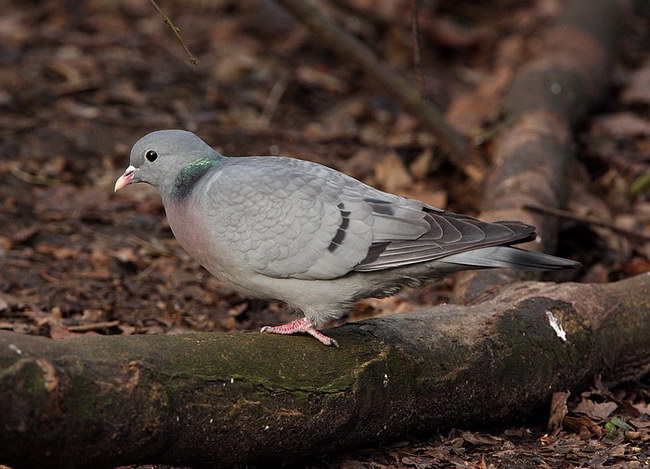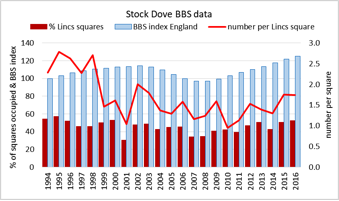Stock Dove Columba oenas
Common and increasing resident and winter visitor.

Stock Doves are a common and well-distributed breeding species. In the nineteenth century it was largely restricted to old woodlands in the northwest, the species began expanding to all parts of the county in later years and by the 1930s it was breeding in most areas. It is now a typical bird of farmland as well as old woods and parkland, particularly favouring hollow trees, old buildings, haystacks and nest-boxes (often erected with owls and kestrels in mind). On the coast and sandy warrens in the northwest it also regularly nests in rabbit burrows. There was a sharp decline in numbers in eastern agricultural areas of England in the late 1950s and early 1960s that was attributed to the use of organochlorine seed dressings, but the species seems to have rapidly recovered to its former status.
In most years records received number more than 1,000, but this sedentary and common bird is undoubtedly under recorded, partly through being ignored and partly through being concentrated in farmland not much visited by birders. The Atlas put the population at 10,000 pairs in the late 1980s. The Lincs BBS index showed a steady decline from 1994 to around 2009 and then an increase since then. The incidence data suggests it has become more widespread and the APEP4 adjusted estimate was around 11,000 pairs in 2016. As a bird of arable farmland, one might expect it to do well in Lincolnshire and it does. Characteristically heard in the spring making its “phwoar” call or seen as a pair flying away, it flocks up in winter and can be subject to movements in some years. In November 2018 there was an exceptional count of 364 birds moving south at Gibraltar Point, the highest since a flock of 550 in November 2009 at Donna Nook.

Only a small number of Stock Doves have ever been ringed in Lincolnshire and there have been no recoveries outside of the county to date. The longevity record for this species according to BTO ringing data is a bit over nine years. The oldest reported in the county is EW30515 which was first ringed as an adult at Dunsby Fen (Bourne) on 29th March 2008 and has been subsequently caught on three occasions at the same site. The last time it was trapped was on 14th July 2013 when it was a minimum of 5 years and 3 months old.
(Account prepared August 2018; includes all data up to 2016 and new Birds of Lincolnshire (2021) update, September 2022)
